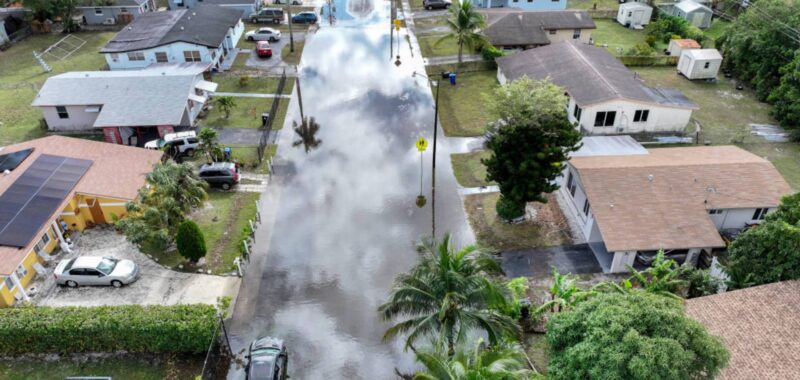A real estate sign stands in front of a burnt property, following the Palisades Fire at the Pacific Palisades neighborhood in Los Angeles, California, U.S. Jan. 13, 2025.Â
Mike Blake | Reuters
Anyone shopping for a mortgage knows how far into your finances lenders like to dive in order to determine your credit-worthiness. But here’s a new factor: climate change.
Given how quickly climate disasters are increasing, both in frequency and in resulting costs, lenders are paying far more attention now to how those costs could hit them. Insurers are also struggling to keep up and more often pulling out of the most risk-prone areas, making the losses even steeper. Add to that, FEMA is in a state of flux under the Trump administration, with both cuts to staff and potential disaster funding.
Climate has therefore become an increasingly important consideration in assessing credit score risk, right along with a consumer’s debt, income and collateral in the home, according to a new report from First Street, a climate risk assessment firm. The risks includes flood, wildfire and wind.
In a severe-weather year, projected annualized climate-driven foreclosures could result in $1.21 billion in bank losses this year, or 6.7% of all foreclosure credit losses, according to the report. Just 10 years from now, as weather events grow more frequent and more destructive, those credit losses could increase to $5.36 billion, representing nearly 30% of foreclosure losses.
If lenders start factoring climate into their underwriting, then a consumer’s credit score could fall or even rise depending on the risk to their property. The former would result in higher borrowing costs. The study notes that lender losses today are primarily in just three states: California, Florida and Louisiana.
“Mortgage markets are now on the front lines of climate risk,” said Jeremy Porter, head of climate implications at First Street. “Our modeling demonstrates that physical hazards are already eroding foundational assumptions of loan underwriting, property valuation, and credit servicingâintroducing systemic financial risk.”
An aerial view of a flooded residential neighborhood street after localized heavy rain on December 18, 2024 in Fort Lauderdale, Florida.Â
Joe Raedle | Getty Images
When a property is flooded in an extreme weather event, it has a higher foreclosure rate than its unflooded neighbors. That historically translates to an average 40% surge in post-flood foreclosures among damaged homes, according to the report.
Consumers in high-risk areas, like the Florida coasts, are already seeing huge jumps in insurance premiums due to recent storms. The First Street report was able to link those increases to a rise in foreclosures. Some homeowners simply can’t afford the increases and are walking away, again, leaving lenders on the hook.
Some lenders may require flood insurance on homes that are in government-designated flood plains, but overall lenders do not factor the effects of future climate change into their underwriting models. Fannie Mae, which is not a lender but funds much of the mortgage market, was looking at doing this two years ago, but has yet to announce any changes.
The annual costs of climate-related disasters have jumped 1,580% over the last four decades, according to the First Street report, which looked at the National Oceanic and Atmospheric Administration’s billion-dollar weather and climate disaster database. That resource will no longer be updated, due to staffing cuts by the Trump administration.
The increase in cost is due not only to greater storm severity, but also to inflation, as well as higher populations and more real estate development in riskier areas. Americans love the coasts and, in most areas, are increasingly paying a premium to live there.
But the jump in those climate-related costs, and the consequent risk, is affecting households, financial institutions and investment portfolios alike.
“There is a significant amount of credit loss risk related to climate that is currently hidden from traditional credit loss models. This reports the systemic effect weather disasters are having in the mortgage market from both direct damages, but also indirect impacts like increasing insurance costs,” Porter added.

